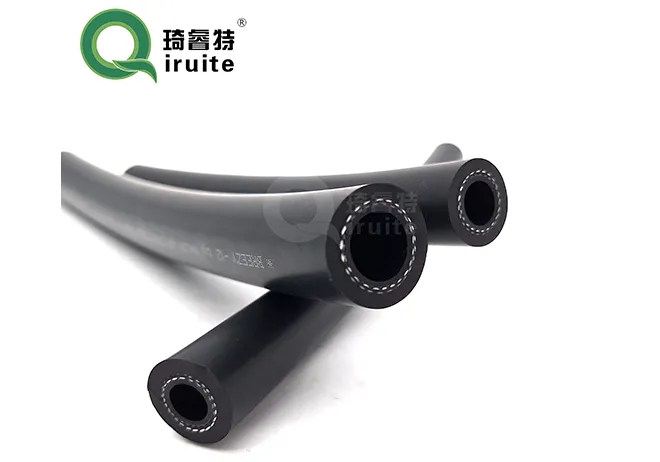Optimizing Brake Tubing for Enhanced Performance and Safety in Automotive Applications
Understanding Brake Tubing A Critical Component for Vehicle Safety
When it comes to automotive safety, one of the most pivotal components that often go unnoticed is the brake tubing. Brake tubing plays a crucial role in ensuring that the vehicle's braking system functions efficiently and effectively. This article will delve into the essential aspects of brake tubing, including its materials, manufacturing processes, maintenance, and importance in vehicle safety.
What is Brake Tubing?
Brake tubing refers to the piping that transports brake fluid from the master cylinder to the brake calipers or wheel cylinders. This fluid is essential for the operation of hydraulic brakes, enabling the transfer of force created by pressing the brake pedal. Properly functioning brake tubing is vital for achieving safe and responsive braking performance.
Materials Used in Brake Tubing
Brake tubing is usually made from materials that can withstand high pressure and resist corrosion. Common materials include
1. Copper Nickel Alloy This alloy provides excellent corrosion resistance, is easy to work with, and can be bent without kinking. Copper nickel brake lines are often preferred for their durability and long lifespan.
2. Steel While more affordable, steel tubing is prone to rust and corrosion, especially in areas with harsh weather conditions. For this reason, steel brake lines are often coated to enhance their protection against elements.
3. Polymer Some manufacturers have started to use advanced polymers for brake tubing. These plastic-based options can resist corrosion and are lightweight, though they may not be suitable for all vehicles.
Understanding the material used in brake tubing is essential for vehicle owners and mechanics, as it directly influences the braking system's performance and longevity.
Manufacturing Process
The manufacturing of brake tubing involves several steps to ensure the final product meets industry safety standards
brake tubing

1. Cutting Raw tubing is cut to the necessary lengths required for specific vehicle models.
2. Bending Tubing must be bent to fit the chassis of the vehicle without crimping or compromising the internal diameter. Precision in bending is crucial to avoid restrictions in fluid flow.
3. Flaring The ends of the tubing are often flared to create a sealable connection with the brake components. This process requires specialized tools to ensure a proper fit and prevent leaks.
4. Testing Before installation, brake tubing undergoes rigorous testing to verify it can withstand the pressures experienced during braking.
Maintenance and Inspection
Regular maintenance and inspection of brake tubing are critical for ensuring safety on the road. Drivers should be aware of the following signs that might indicate problems with their brake lines
- Visual Inspection Regularly look for signs of corrosion, leaks, or physical damage to brake tubing. Any visible issues should be addressed immediately.
- Brake Performance If the brake pedal feels spongy or goes to the floor without significant resistance, it may indicate air in the braking system or a leak in the brake tubing.
- Fluid Leaks Puddles of brake fluid beneath the vehicle can indicate damaged brake tubing. It is essential to get this checked out promptly, as low brake fluid levels can lead to brake failure.
Importance for Vehicle Safety
The importance of brake tubing cannot be overstated. It is a key component that directly affects braking efficiency. If brake lines fail due to corrosion, damage, or improper installation, it can lead to brake failure, resulting in severe accidents. Investing in high-quality brake tubing and ensuring proper maintenance can save lives and prevent costly incidents.
In conclusion, brake tubing is an integral part of a vehicle’s braking system, contributing significantly to overall safety. Understanding the materials, manufacturing processes, and importance of regular maintenance can empower vehicle owners to make informed decisions regarding their braking systems. A proactive approach to brake tubing care not only enhances vehicle performance but also ensures the safety of all road users. Remember, in matters of safety, it’s always better to be cautious than to regret.
-
Ultimate Spiral Protection for Hoses & CablesNewsJun.26,2025
-
The Ultimate Quick-Connect Solutions for Every NeedNewsJun.26,2025
-
SAE J1401 Brake Hose: Reliable Choice for Safe BrakingNewsJun.26,2025
-
Reliable J2064 A/C Hoses for Real-World Cooling NeedsNewsJun.26,2025
-
Heavy-Duty Sewer Jetting Hoses Built to LastNewsJun.26,2025
-
Fix Power Steering Tube Leaks Fast – Durable & Affordable SolutionNewsJun.26,2025

